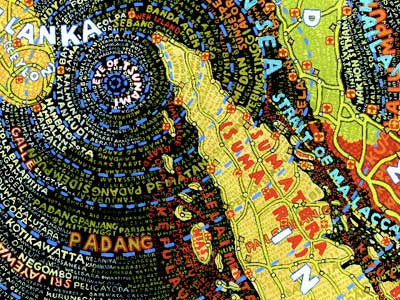Digital kiosks are already widely used and it might be hard to imagine life without them. However, the experience of using a digital kiosk is very private and happens mostly in isolation.
The questions are:
How can we use touch-screen technology, such as digital kiosks, to benefit the local community?
How could the users be encouraged to interact with each other?
My observation of existing community communications indicate that people are constantly seeking the means of communicating with neighbours and other people living locally. They do it via local print and web publications (classified advertisements) as well as through community notice boards.
These community notice boards can be found in various public places such as launderette, bus stops, workplace corridors, but also 'corner shops' and SUPERMARKETS.
"Community poster boards serve an important community building function. Posted fliers advertise services, events and people’s interests, and invite commun
But, as we moved into the 'digital era' these old fashioned boards are being replaced with digital ones that display community-generated, interactive multi-media content in the physical environments. As oppose to web-based notice boards, these physical, touchable objects
"blur the notional 'boundary' between virtual and physical locales of communication, and take advantage of the fact that relationships usually take place offline as well as online" (Churchill, Nelson & Denoue 2003).

They also stimulate unplanned social interactions around digital content and provide opportunities for discovery of shared interests. In other words, the users don't interact with the content privately from their home PCs, but interact with the content in public and therefore have the opportunity to discuss it with other users on the spot. It reminds me of the
"Memory Maps" and the notion of
'triangulation'.
The digital kiosks and interactive digital community boards
have had a deep impact on my RSA project since I decided to look into the communities of the future and the future of communication within those communities. I want to design a completely new genre of communication: a wall-size, digital and interactive touch screen that could be placed in supermarkets. It would not only inform the community members, communicate important messages, but also stimulate interactions between individual users.
References:



 They also stimulate unplanned social interactions around digital content and provide opportunities for discovery of shared interests. In other words, the users don't interact with the content privately from their home PCs, but interact with the content in public and therefore have the opportunity to discuss it with other users on the spot. It reminds me of the "Memory Maps" and the notion of 'triangulation'.
They also stimulate unplanned social interactions around digital content and provide opportunities for discovery of shared interests. In other words, the users don't interact with the content privately from their home PCs, but interact with the content in public and therefore have the opportunity to discuss it with other users on the spot. It reminds me of the "Memory Maps" and the notion of 'triangulation'.









